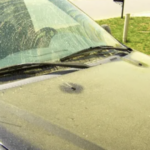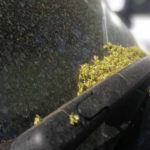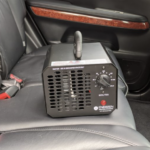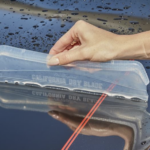Can Paint Correction Fix Fading and Sun Damage in Casselberry?
Living in sunny places like Casselberry or Orlando comes with a unique set of challenges for car owners. One of the most common issues that arise due to excessive sun exposure is fading and sun damage to a car’s paint. Over time, the paint can lose its vibrancy, become dull, and develop discoloration due to constant UV radiation. While some car owners may assume this damage is irreversible, there is good news: paint correction can often restore the appearance of your car’s paint, even after it’s been affected by sun damage.
In this comprehensive guide, we’ll explore whether paint correction can truly fix fading and sun damage to a car in Casselberry or the Orlando area. We’ll also discuss what paint correction is, how it works, the extent of the repairs it can make, and when it’s time to consider other options. Whether you’re dealing with a faded finish from the Orlando sun or have noticed your car’s paint losing its shine, read on to learn how paint correction can help.
What is Paint Correction?
Before we delve into how paint correction can address fading and sun damage, it’s essential to define what paint correction is. Paint correction is a highly effective detailing process aimed at removing imperfections from a car’s paint surface. These imperfections may include swirl marks, scratches, oxidation, water spots, and other blemishes that dull the car’s finish.
To perform paint correction, professional detailers use specialized polishing tools, compounds, and pads to carefully smooth out the paint. The process varies depending on the severity of the imperfections, with light polishing addressing surface-level issues and more aggressive methods being used to tackle deeper scratches and oxidation.
The main goal of paint correction is to restore the original clarity, depth, and shine of the paint, leaving the vehicle with a smooth, glossy finish.
Sun Damage and Fading: What Happens to Your Car’s Paint?
In regions like Orlando, where the sun shines year-round, UV rays can significantly impact a car’s exterior over time. Here are the key ways sun exposure damages paint:
1. Oxidation
Oxidation occurs when the paint is exposed to oxygen and UV rays over an extended period. This chemical reaction causes the paint to break down, leading to a dull, chalky appearance. Oxidation can also cause the paint to lose its original color, making the car appear older than it is.
2. Fading
Fading happens when the UV rays break down the pigments in the paint. This results in a loss of color intensity and a washed-out appearance. Certain colors, like black or red, are especially prone to fading due to the specific pigments they contain.
3. Clear Coat Damage
The clear coat is a protective layer that sits on top of the paint and provides gloss and protection against the elements. Sun exposure can break down the clear coat, leading to a cloudy or hazy appearance. In some cases, the clear coat may start to peel or crack.
4. Heat-Induced Damage
The heat from the sun can also lead to the softening of the paint surface, which may cause it to become more susceptible to scratching and other imperfections. The combination of heat and UV exposure accelerates the aging of the paint.
5. Water Spots and Mineral Deposits
Sun exposure can also intensify the visibility of water spots and mineral deposits that accumulate on the surface. As the sun dries water quickly, it leaves behind hard-to-remove minerals, which can stain the paint.
How Paint Correction Addresses Sun Damage and Fading
Now that we’ve outlined the types of sun damage and fading, let’s explore how paint correction can remedy these issues. While paint correction cannot completely reverse extreme damage or fix issues like peeling paint, it can significantly improve the appearance of faded and sun-damaged paint. Here’s how it works:
1. Removing Oxidation
One of the most common effects of sun exposure is oxidation, which can make the paint appear dull and lifeless. During the paint correction process, professional detailers use specific polishing compounds that remove the oxidized layer of paint, revealing the fresh, vibrant paint underneath. This helps restore the car’s original gloss and color, making it look significantly better.
If the oxidation is extensive, more aggressive methods may be required to eliminate it. However, with the right tools and expertise, most cases of oxidation can be successfully corrected through paint correction.
2. Restoring Faded Paint
Fading is a result of UV rays breaking down the paint’s color pigments, but paint correction can help restore some of that color depth. By using a combination of polishing compounds and techniques, paint correction can minimize the visibility of fading. In many cases, the result is a noticeable improvement in the car’s appearance, with the color becoming more vibrant and the finish appearing more uniform.
However, it’s important to note that severe fading caused by prolonged sun exposure may not be entirely reversible with paint correction alone. While paint correction can make the paint look better, it may not fully restore it to its original vibrancy. For severely faded cars, repainting might be necessary to achieve the best results.
3. Smoothing Out the Clear Coat
As mentioned earlier, sun exposure can cause the clear coat to deteriorate, leading to a hazy or cloudy finish. Paint correction helps restore clarity to the clear coat by removing the damaged layers and polishing it to a smooth, glossy finish. This not only improves the appearance of the car but also enhances its protection against future sun damage.
4. Polishing and Enhancing Gloss
The paint correction process is designed to enhance the overall gloss of the paint. By removing imperfections like swirl marks, scratches, and oxidation, the surface becomes more reflective. The result is a deep, high-gloss finish that looks as though it’s been freshly painted.
Even if the car’s paint has suffered from sun damage, paint correction can significantly improve its shine and luster. The process allows the paint to reflect light more effectively, giving the car a more polished, professional appearance.
5. Protecting Against Future Damage
After paint correction, many detailers recommend applying a protective coating such as wax, sealant, or ceramic coating. These coatings act as a barrier against future UV damage, oxidation, and environmental contaminants. They help maintain the appearance of the car by providing an additional layer of protection for the paint.
By investing in both paint correction and a protective coating, you can ensure that your car’s paint remains in excellent condition, even when exposed to the harsh Florida sun.
The Limitations of Paint Correction for Sun Damage
While paint correction is an effective solution for improving sun-damaged paint, there are certain limitations to consider:
1. Severe Fading May Require Repainting
As mentioned earlier, severe fading caused by years of sun exposure may not be entirely reversible with paint correction. In cases where the paint has become too faded or damaged, repainting may be the only option for restoring the car’s original look. Repainting is a more expensive and time-consuming process, but it offers a more permanent solution.
2. Clear Coat Peeling or Flaking
Paint correction can improve the clarity and gloss of a car’s clear coat, but if the clear coat has already begun to peel or flake, paint correction may not be effective in fixing it. In such cases, the peeling clear coat will need to be addressed, which may require respraying or refinishing the affected areas.
3. Deep Scratches and Dents
While paint correction is great for removing swirl marks and minor scratches, it cannot fix deep scratches or dents. For deep paint damage, additional repairs may be needed before a successful paint correction can be performed.
4. Cost and Time Investment
Paint correction requires specialized tools, products, and expertise, which means it can be a time-consuming and costly process. Depending on the extent of the sun damage, paint correction can take several hours or even a full day to complete. It’s important to weigh the benefits against the cost and time investment before deciding whether paint correction is the right solution for your car.
When to Consider Paint Correction for Your Car
If you’ve noticed your car’s paint showing signs of fading or sun damage, it’s worth considering paint correction. Here are a few signs that paint correction could be beneficial:
- Dull, chalky, or faded paint: If your car’s paint has lost its original vibrancy, paint correction can help restore some of its gloss and color depth.
- Oxidation: If you see a cloudy or dull layer of oxidation on your car’s paint, paint correction can remove it and reveal a smoother, shinier surface.
- Clear coat issues: If the clear coat has become hazy or damaged, paint correction can improve its clarity and restore the glossy finish.
- Swirl marks or light scratches: If your car’s paint has visible swirl marks or light scratches, paint correction can polish the surface and eliminate these imperfections.
Conclusion: Can Paint Correction Fix Fading and Sun Damage?
Paint correction is a powerful tool in restoring the appearance of your car’s paint, especially when it comes to addressing sun damage and fading. While it may not be able to completely reverse severe damage, it can certainly improve the overall look of your car, restoring its shine, vibrancy, and smoothness. For cars with moderate fading, oxidation, or clear coat issues, paint correction can offer impressive results, making it a worthwhile investment for car owners in sunny regions like Orlando.
However, it’s essential to understand that paint correction has its limitations. Severe fading, deep scratches, and peeling clear coats may require more intensive repairs, such as repainting or refinishing. For the best results, it’s always a good idea to consult with a professional detailer to assess the condition of your car’s paint and determine the best course of action.
By restoring your car’s paint through paint correction and following up with regular maintenance and protective coatings, you can keep your car looking its best, even in the face of harsh sun exposure.
Leave a Comment Cancel Comment
Book Orlando Mobile Detailing
Search
Latest Post
-
 The Cost of Neglect: Why Regular Aircraft Detailing Saves Money in the Long Run
February 14, 2025
The Cost of Neglect: Why Regular Aircraft Detailing Saves Money in the Long Run
February 14, 2025
-
 Why Car Washes Aren’t Enough to Combat Pollen Damage
February 13, 2025
Why Car Washes Aren’t Enough to Combat Pollen Damage
February 13, 2025
-
 Orlando’s Pollen Problem: When Is It the Worst and How It Affects Your Car
February 13, 2025
Orlando’s Pollen Problem: When Is It the Worst and How It Affects Your Car
February 13, 2025
-
 How Ozone Generators Eliminate Stubborn Car Odors in Orlando
February 12, 2025
How Ozone Generators Eliminate Stubborn Car Odors in Orlando
February 12, 2025
-
 Why a Water Blade and Chamois Beat Towels Every Time!
February 9, 2025
Why a Water Blade and Chamois Beat Towels Every Time!
February 9, 2025
